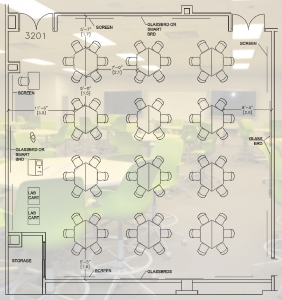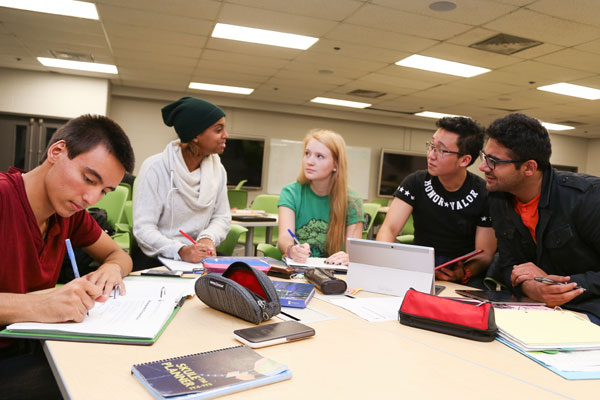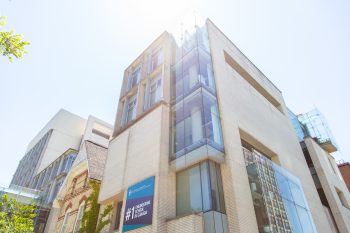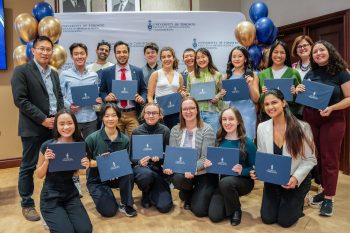Most of us think of a classroom as rows of desks facing a podium or screen; students sit quietly, alternating between taking notes and listening to a professor lecture.
This is a model that all of us have experienced—but is it the best way to learn?
Eager to explore this question, U of T Engineering recently unveiled a pilot Technology Enhanced Active Learning (TEAL) classroom. TEAL rooms offer an innovative new educational method that facilitates collaboration and hands-on learning, assisted by technology and strategic design.
With several TEAL rooms expected in the forthcoming Centre for Engineering Innovation and Entrepreneurship (CEIE), the pilot project gives U of T engineering students and educators a taste of how the different format works
“The pilot room is a great chance for us to see the design in action,” said Steve Miszuk, director, facilities and infrastructure planning. “We can try out different layouts and technologies, get feedback and see what really works.”
Located in the Sandford Fleming building, the TEAL room features bright green chairs clustered around 12 hexagonal tables that are spread throughout the room. This layout – an alternative to the traditional lecture-style of all tables and chairs facing one podium – encourages collaboration amongst students. And thanks to wheels on all chairs and tables, the room can be as flexible as needed, quickly adjusting for exam or tutorial formats.
“The new TEAL classrooms provide a great space for collaborative learning in tutorials or courses with small class sizes,” said Susan McCahan, vice dean, undergraduate. “There’s a lot of evidence to suggest that active, team-based learning is an effective model for students, and this is a great chance to implement those practices.”
In addition to changing the method of how students learn and retain information, TEAL rooms also invite instructors to rethink how they deliver material. Rather than remaining stationary near the front of the room, professors

are encouraged to move from table to table.
Eight 80-inch screens are spaced evenly around the room – two on each wall – to make material visually accessible to every student. And with tables set at bar-height, the instructor is able to engage students at eye-level rather
than leaning down or lecturing from above.
To further enhance the collaborative experience and enable peer-to-peer learning, every table is equipped with ports so that students can showcase their work easily on the digital displays.
U of T Engineering’s pilot TEAL classroom is already being heavily used, with over 35 hours booked per week across a number of departments and divisions.
“The TEAL rooms are one example of collaborative learning spaces we’re implementing around campus,” said Miszuk, who also mentioned new study areas in the Bahen Centre. “Keep an eye out for more projects in the future.”




